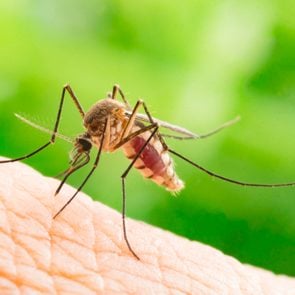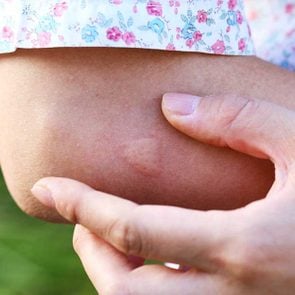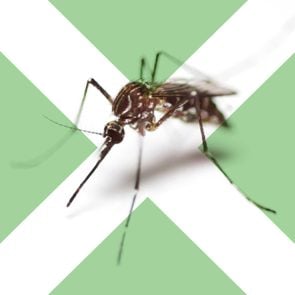Brown Recluse Spider Bites—Everything You Need to Know
Updated: Nov. 04, 2020
The good news: Brown recluse spiders aren't as common as you might think. The bad news: Their bite can be nasty. Here's how to avoid the spider and what to do if you get bitten.
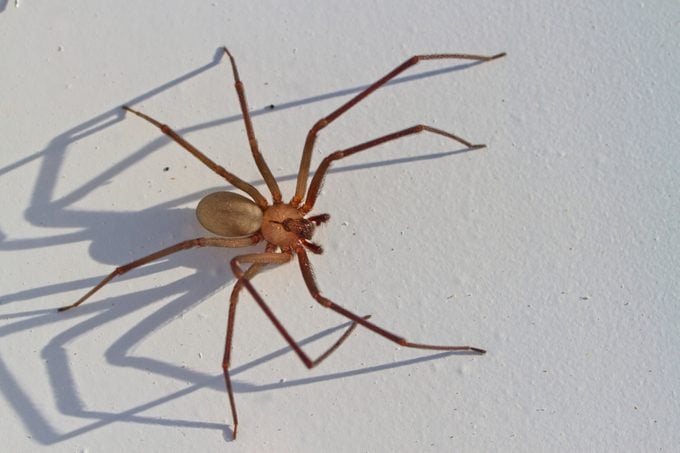
The brown recluse typically lives up to its name: The spider is quiet, shy, and really just wants to be left alone. Nonetheless, it gets blamed for thousands of gruesome bites each year. That’s unfair, according to arachnologists: Brown recluses rarely bite (just like wolf spiders), and even though their bite is venomous, 90 percent of the bites are minor and heal on their own.
On This Page
Where brown recluses live
Despite nearly every U.S. citizen feeling certain they’ve seen the spider in their basement or woodpile, brown recluses are limited to a very specific region of the United States: The northern border of the spider’s habitat runs from Nebraska to Ohio, and south from central Texas to Florida. That’s it.
The reason for all the confusion is that brown recluses mostly look like a lot of other spiders. Their primary distinguishing feature is that they have six eyes instead of the usual eight, but few people get close enough to count. If you live in the area where the spiders reside, remember that they like woodpiles, sheds, garages, basements, attics (under boxes), and then, disturbingly, shoes, clothing, or bedding. If you see a spider hanging out on a web in clear view, it may startle you but it’s not a brown recluse—they don’t spin webs to capture prey. They do build small silk retreats to hide in during the day, usually out of sight and low to the ground.
How do I avoid getting bitten?
Spiders don’t feed off your blood the way mosquitoes or bed bugs do, and they have no interest in being near humans. “The most common reason for a brown recluse to bite is when the spider is in a situation where its life is being threatened, and it’s defending itself,” says arachnologist, Catherine Scott, PhD, at Acadia University, Wolfville, Nova Scotia, Canada.
People tend to get bitten when the brown recluse is stuck between the skin and clothes, bedding, or shoes, according to the Centers for Disease Control and Prevention: The reason is that the spider can’t just chomp you at will—it need counter pressure to sink its fangs into a human. Another common way to get bit is by picking up a box where a brown recluse is hiding and press against it, says Scott. “If you dry off with a towel that has been lying on the floor and there’s a spider in it, or you put on a pair of pants that you left on the floor last night, and there’s a spider in the leg, those are situations where they might bite,” she explains.
Preventing brown recluse bites
Basically, look before you reach, shake things that have been stored for a long time or lying on your floor overnight, don’t put on shoes or clothing that has been stored in the garage or shed without shaking them out first, and keep bedding from touching the ground. Scott says brown recluses tend to hug the walls; if you think the spiders may live in your home (by the way, they’re prolific breeders and if you find one, there are likely to be more—maybe many more), she recommends pulling the bed away from the wall and putting sticky traps along the baseboards.
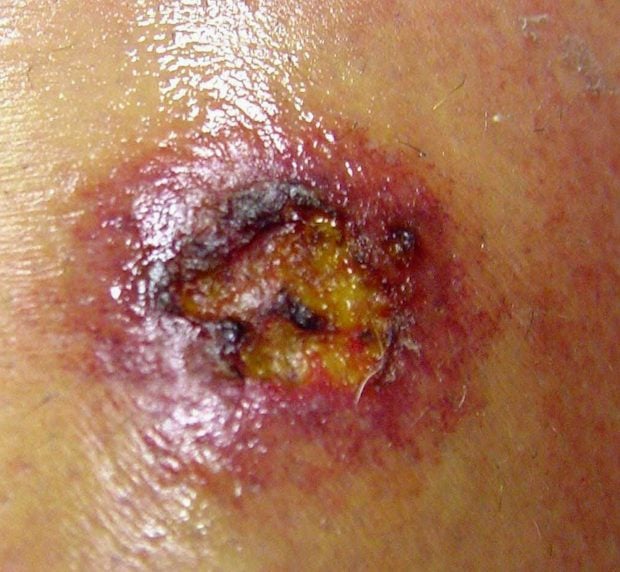
How do I know a brown recluse bit me?
Unless you’re an entomologist or an experienced doctor or dermatologist who has treated brown recluse bites, the one way to know for certain is to have captured the spider and save it for identification. (There’s a test that can identify the spider’s venom, but it’s not common and most doctors won’t have it on hand.) “The only confirmed spider bites that I have identified have been when the person has brought me the spider that was squished after being rolled on,” says entomologist Jody Green, PhD, at the University of Nebraska, Lincoln.
The brown recluse has tiny fangs and you’re unlikely to feel the initial bite. Plus, brown recluse bites are easily confused for a host of other insect bites, not to mention a number of medical conditions such as fungal or bacterial skin infections, especially methicillin-resistant Staphylococcus aureus—MRSA. In one study, 30 percent of patients with MRSA thought the infection was a spider bite).
Remember, if you don’t live in the states where brown recluses live, it’s probably not a brown recluse bite. Also, if you see more than one bite mark, it’s probably not a brown recluse. Unlike insects that feast on our blood, they bite once out of self-defense and try to make their escape. You can figure out what got you with this bug-bite guide.
What are the symptoms of a brown recluse bite?
If bitten, you may experience these symptoms:
- Stinging or burning sensation anywhere from two to eight hours after the bite
- A bite mark that is whitish blue or purple and flat (that doesn’t last more than three months)
- Nausea
- Vomiting
- Intense itching
- Muscle pain
- Necrotic ulcer—a crater-like area of dead skin and underlying tissue.
- Systemic loxoscelism, a rare illness associated with a venomous bite that can cause inflammation throughout the body and even lead to life-threatening destruction of red blood cells, especially in people with compromised or weakened immune systems such as the very young, the elderly, and people with chronic health conditions.
I think a brown recluse bit me: What now?
Most people don’t see the spider that bit them, but if you killed it or shook it out of clothing, bedding, or a shoe, Scott recommends carefully placing it in a ziplock baggie or sealed container and put it in the freezer. (Be sure to wear gloves, just in case the spider isn’t dead.) “I would absolutely recommend seeking medical advice, and take the spider with you,” says Scott. Keep in mind, the pain from a brown recluse isn’t usually immediate; watch for discoloration of the skin and call your doctor or seek medical attention for treatment if you do.
How can I treat a brown recluse bite?
Doctors recommend starting with rest, ice, and elevation of the area where you were bitten—the basics in treating most bug bites. Swelling isn’t usually common unless the spider bite is on your face or feet. You can try acetaminophen (Tylenol) or ibuprofen (Motrin) for pain, and antihistamines such as Benadryl for itching. Adam Friedman, MD, dermatologist, professor and interim chair of dermatology at The George Washington University School of Medicine & Health Sciences, recommends a tetanus booster if you’re overdue—tetanus spores can collect inside the bite.
“The toxin and resulting injury create a very robust immune reaction which can further the injury from the bite. Much of the management is geared toward preventing further damage,” says Dr. Friedman. This may include topical steroids such as hydrocortisone which you can apply to the red borders to calm any inflammatory reaction; your doctor may prescribe antibiotics if you show signs of an infection.
Take good care of the wound
The gruesome-looking crater at the center of a brown recluse bite is dying tissue, and it can slow or prevent healing, points out Dr. Friedman: “The necrotic skin in the middle of an ulcer is a roadblock preventing new cells from migrating in.” Cleaning the area to remove the dead tissue is key, he says. “Collagenase (an enzyme) might be given to help break down the dead tissue to help with healing,” Dr. Friedman explains. “Wound care is incredibly important to prevent infection and a poor cosmetic outcome with the scar.”
Keep the wound covered and moist, says Dr. Friedman. He uses Xeroform dressings with a Vaseline impregnated gauze to keep the wound from drying out. This is backed up by a nonstick dressing to keep from reopening the wound when you change the dressing. Typically, healing takes at most two to three months, depending on the severity. You may also want to follow these tips to help prevent scarring.






















